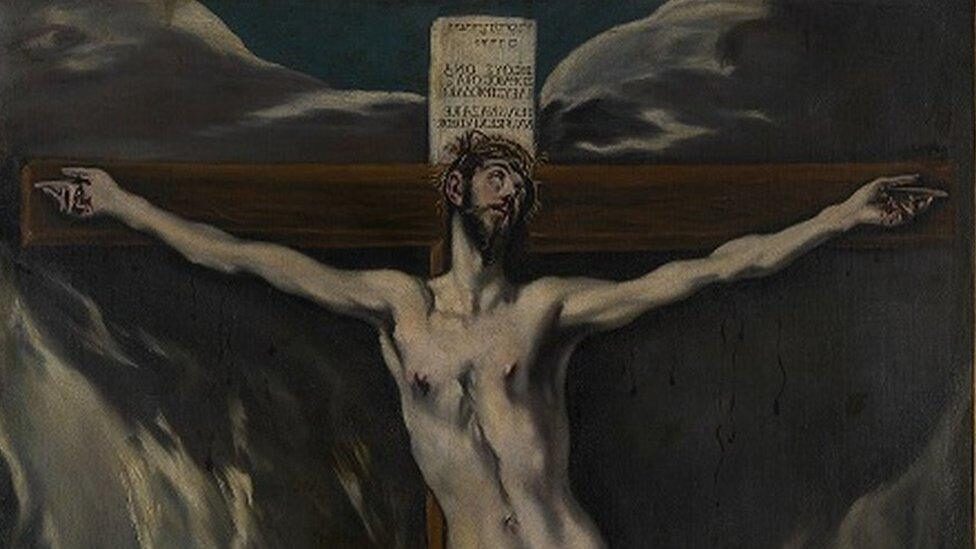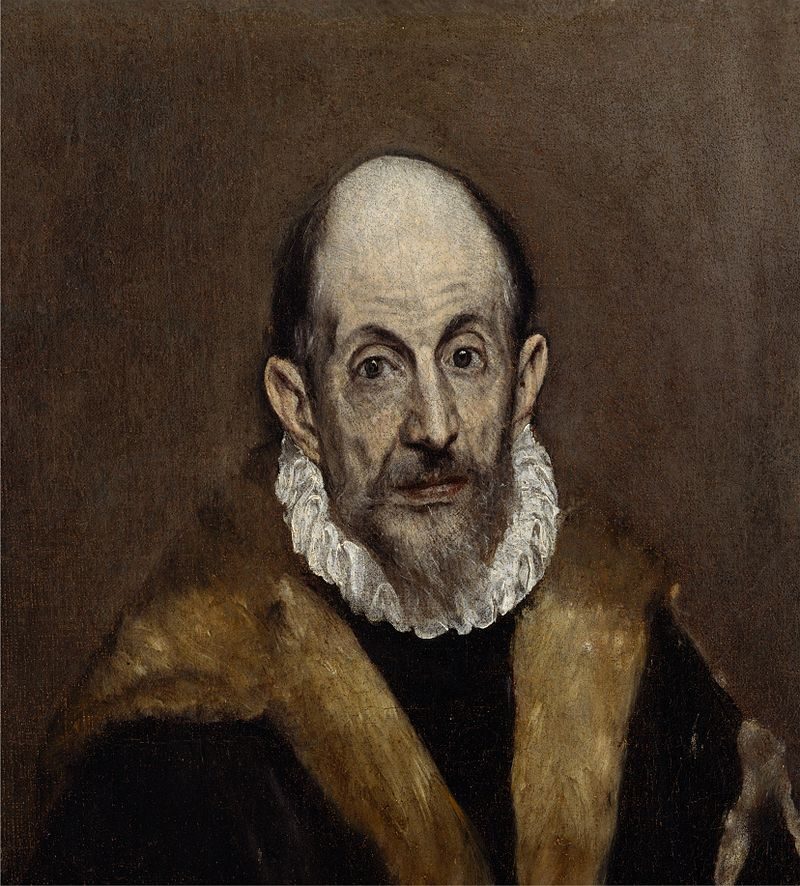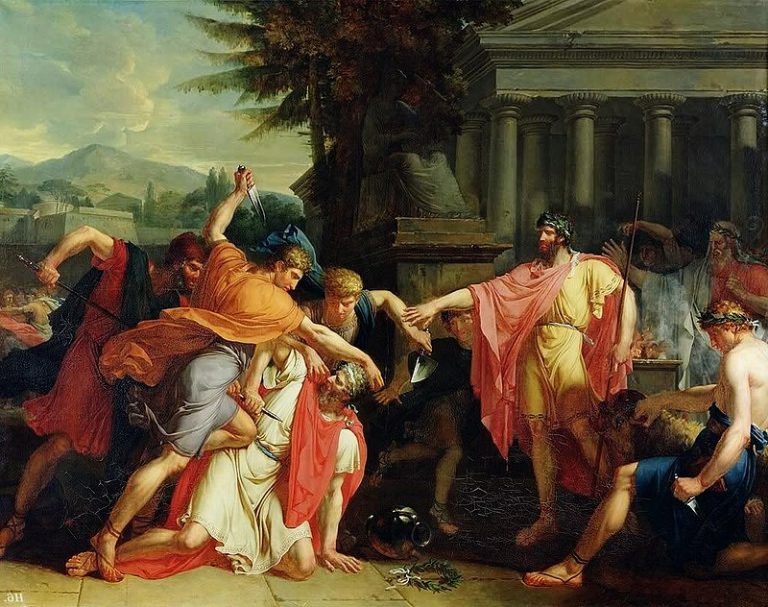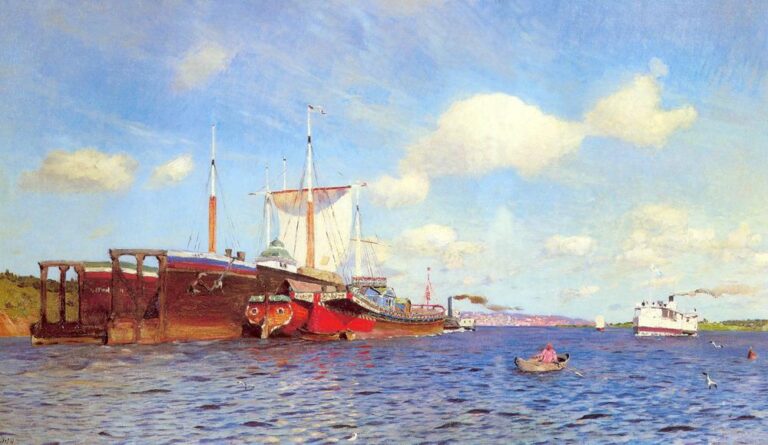El Greco (Doménikos Theotokópoulos) Painter: Master of Spanish Renaissance Art
Born: 1 October 1541, either Fodele or Candia, Crete
Death: 7 April 1614, Toledo, Spain
Art Movement: Cretan School, Mannerism, Spanish Renaissance
Nationality: Greek
Institution: Cretan School
El Greco (Doménikos Theotokópoulos) Painter: Master of Spanish Renaissance Art
Early Life and Artistic Beginnings
El Greco’s journey as an artist began in Crete and evolved through his experiences in Venice and Rome. His early training and influences established the foundation for his distinctive style that would later flourish in Spain.
Cretan Roots and Byzantine Traditions
Doménikos Theotokópoulos, known as El Greco, was born in 1541 in Candia (modern Iráklion), Crete. At that time, Crete was part of the Republic of Venice, serving as a cultural crossroads between East and West.
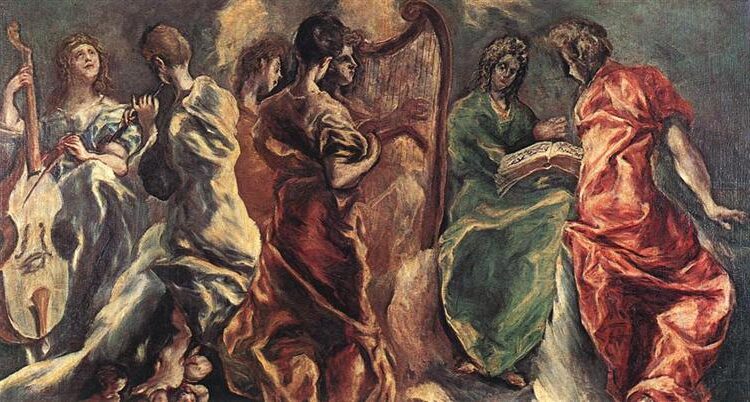
Concert of Angels (Concierto de Ángeles) (c. 1610) by El Greco
El Greco first trained as an icon painter in the strict Byzantine tradition of the Cretan School. This early training taught him the formal, stylized approach to religious imagery that would remain influential throughout his career.
While some sources suggest he was born in Fodele, a village near Candia, most scholars agree his formative years were spent in the island’s main city.
By his twenties, El Greco had become a master painter in the Byzantine style, creating religious icons with the characteristic flat, elongated figures and gold backgrounds.
Venetian Influence and Roman Interlude
In his late twenties, El Greco moved to Venice, a decision that transformed his artistic vision. In Venice around 1567, he studied the works of Renaissance masters like Titian and Tintoretto, absorbing their bold use of color and dramatic compositions.
The Venetian period marked a crucial shift in El Greco’s style as he began incorporating Western painting techniques while maintaining elements of his Byzantine training. His palette brightened, and his figures became more naturalistic yet retained their spiritual intensity.
By 1570, El Greco had moved to Rome, where he studied the works of Michelangelo and other Italian masters. Though his time in Rome was not entirely successful professionally, it further refined his distinctive approach to space, form, and color that would later define his masterpieces in Toledo, Spain.
Pinnacle of Career in Toledo

Christ Driving the Traders from the Temple (c. 1570) by El Greco
After moving to Spain in 1576, El Greco established himself in Toledo where he would achieve his greatest artistic success. His unique style, combining Byzantine traditions with Renaissance techniques and Mannerist elements, found an appreciative audience in this Spanish religious center.
Masterpieces and Major Commissions
El Greco received his first major Spanish commission from the Church of Santo Domingo el Antiguo in Toledo. Here he created “The Assumption of the Virgin,” showcasing his distinctive elongated figures and spiritual intensity. This initial success led to more prestigious work.


His masterpiece “The Burial of the Count of Orgaz” (1586-1588) represents the peak of his artistic achievement. This large-scale painting for the Church of Santo Tomé in Toledo brilliantly divides the canvas between earthly and heavenly realms.
“El Espolio” (The Disrobing of Christ) was another significant commission for Toledo Cathedral. The painting shows Christ in a brilliant red robe surrounded by his tormentors, demonstrating El Greco’s bold use of color and emotional expression.
Innovations in Religious and Portrait Art
El Greco’s religious paintings departed dramatically from conventional Renaissance approaches. Unlike Raphael or Titian, he distorted proportions and used unnatural coloration to convey spiritual fervor rather than physical reality.

Laocoön (c. 1610) by El Greco
His portraits revealed psychological depth while maintaining his signature style. Notable examples include his aristocratic Toledan subjects portrayed with elongated features and penetrating gazes.
“View of Toledo” stands as one of the first landscape masterpieces in Western art. El Greco depicted the city under dramatic stormy skies with eerie green light, showing his willingness to manipulate reality for emotional effect.
His innovations influenced later artists despite being out of step with contemporaries who favored more naturalistic approaches. El Greco’s work bridged Byzantine icon traditions with Western painting techniques in a unique synthesis.
Legacy and Influence on Future Generations
El Greco’s distinctive style and visionary approach to art left an indelible mark on the art world that continues to resonate today. His unusual techniques and spiritual intensity influenced countless artists across different movements and time periods.
Enduring Impact on the Art World
El Greco’s work remained largely forgotten for centuries after his death. However, his rediscovery in the late 19th century sparked new appreciation for his genius. Art historians now recognize him as a master who bridged Renaissance techniques with modern sensibilities.
His paintings hang in prestigious institutions worldwide, including the National Gallery of Art in Washington, D.C. Works like “The Opening of the Fifth Seal” showcase his unique expressionistic style that was centuries ahead of its time.
The Prado Museum in Madrid houses the world’s largest collection of El Greco’s paintings, drawing visitors from around the globe to study his innovative techniques and spiritual depth.
El Greco’s Mark on Modern Art and Artists
Pablo Picasso drew significant inspiration from El Greco’s elongated figures and bold distortions. These elements became foundational to Cubism and other 20th-century movements that rejected strict realism.
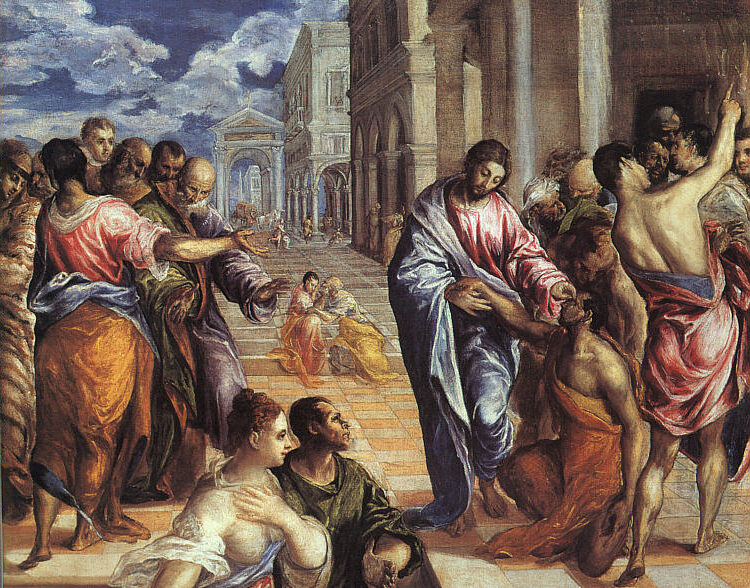
Christ Healing the Blind (1577) by El Greco
Expressionist painters embraced El Greco’s emotional intensity and dramatic use of color. His ability to convey spiritual experiences through visual means resonated with artists seeking to express inner feelings rather than external reality.
Modern Greek composer Vangelis created musical works inspired by El Greco’s paintings, demonstrating the artist’s influence beyond the visual arts.
El Greco’s willingness to break conventional rules of proportion and perspective opened doors for generations of experimental artists. His spiritual approach to art-making continues to inspire those who see art as more than mere representation.
Frequently Asked Questions
El Greco’s unique artistic vision created a lasting impact on Western art history. His distinctive style, notable works, and journey from Greece to Spain have made him one of the most studied Renaissance artists.
What are the distinctive characteristics of El Greco’s painting style?
El Greco’s style features elongated figures with dramatic poses and expressive faces. This distortion creates a sense of spiritual intensity unique to his work.
His paintings use bold colors, particularly blues, greens, and yellows against dark backgrounds. This creates striking contrasts that emphasize the emotional quality of his subjects.
El Greco’s brushwork is loose and dynamic, giving his paintings a vibrant, almost modern feel. His compositions often include swirling skies and supernatural light that enhance the mystical quality of his religious scenes.
Which notable works are attributed to El Greco, and where can they be viewed?
“The Burial of the Count of Orgaz” is perhaps El Greco’s masterpiece, located in the Church of Santo Tomé in Toledo, Spain. It shows both earthly and heavenly realms in a single composition.
“View of Toledo” and “The Opening of the Fifth Seal” can be found in the Metropolitan Museum of Art in New York. These works showcase his distinctive landscape style and apocalyptic vision.
The Prado Museum in Madrid houses several important pieces including “The Trinity” and “The Nobleman with his Hand on his Chest.” Other significant collections exist in the National Gallery in London and museums throughout Spain.
How have El Greco’s works influenced modern art?
Picasso and other Cubist painters drew inspiration from El Greco’s deliberate distortion of human figures. His elongated forms and spatial innovations appeared centuries ahead of their time.
Expressionist painters admired El Greco’s emotional intensity and dramatic use of color. Artists like Jackson Pollock cited El Greco’s dynamic compositions as influential to abstract expressionism.
His work experienced a major revival in the late 19th and early 20th centuries. Modern artists recognized his rejection of classical proportion as revolutionary and relevant to their own experimental approaches.
Can you describe El Greco’s journey as an artist from Crete to Spain?
Born in Crete in 1541, Doménikos Theotokópoulos began as an icon painter in the Byzantine tradition. He signed his works in Greek letters throughout his life, affirming his Greek heritage.
He traveled to Venice and Rome to study the works of Renaissance masters like Titian and Michelangelo. These influences transformed his style, though he developed a unique approach distinct from Italian painters.
El Greco finally settled in Toledo, Spain around 1577, where he lived until his death in 1614. Despite initial struggles, he established a successful workshop and created his most important works in this Spanish city.
What were the main themes and subjects of El Greco’s artwork?
Religious subjects dominated El Greco’s output, reflecting Spain’s devout Catholic culture during the Counter-Reformation. His interpretations of biblical scenes conveyed intense spirituality through mystical light and elongated figures.
El Greco painted numerous portraits of Spanish nobility and intellectuals. These works show his remarkable ability to capture psychological depth while employing his distinctive stylistic elements.
He also created landscapes, particularly views of Toledo, that infused natural scenes with dramatic, almost supernatural qualities. These landscapes often featured stormy skies and emphasized spiritual rather than realistic representation.
What impact did El Greco have on the art world during and after his lifetime?
During his lifetime, El Greco had success but also faced criticism for his unconventional style. Some contemporaries found his distortions and color choices too radical for traditional tastes.
His reputation declined after his death but was dramatically revived in the late 19th century. Modern artists and critics recognized his genius and innovative approach that broke from Renaissance conventions.
Today, El Greco is celebrated as a visionary who bridged Byzantine, Italian Renaissance, and Spanish artistic traditions. His unique expressionistic style has secured his place as one of history’s most original and influential painters.

